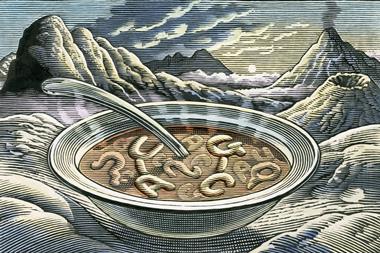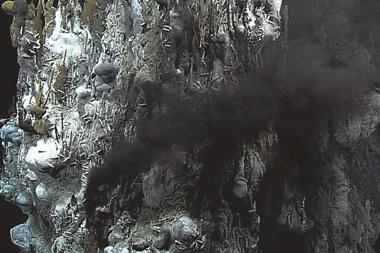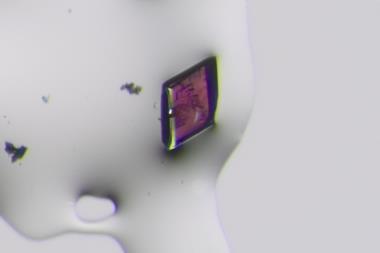The way in which fragments of proteins formed on the prebiotic Earth has shed light on why all living organisms use the same set of 20 amino acids. Researchers in the US found that proteinogenic amino acids – those used to make natural proteins – more readily link into small peptide chains known as oligomers than those that are similar in structure but that life doesn’t make use of. These chemical properties may have made them more likely to be incorporated into proteins during the evolution of the earliest life forms.
‘Before life on prebiotic Earth, there would have been a larger set of available amino acids than the 20 that were eventually selected by biology,’ says Luke Leman from the Scripps Research Institute in La Jolla, who led the work together with Loren Williams at the Georgia Institute of Technology. ‘We know this because of experiments simulating the early Earth, and because non-proteinogenic amino acids have been found in meteorites, sometimes in much higher abundance than the amino acids used in proteins.’
Origin-of-life scientists have long been drawn to intriguing questions surrounding the evolution of proteins. ‘Why does biology use 20 amino acids – why not 12 or 40? And why did nature choose these particular 20 amino acids?’ says Leman. ‘We discovered that there are purely chemical factors, based on higher polymerisation reactivity and fewer side reactions, that might have contributed to this selection process.’
He explains the group is particularly interested in the three proteinogenic amino acids that have positively-charged side chains – lysine, arginine and histidine – because they are involved in a broader research programme studying co-evolution between early proteins and early nucleic acids. ‘Based on prior work, we knew that peptides and depsipeptides could be generated by simply drying down mixtures of amino acids and hydroxy acids, both of which are produced in prebiotic simulation reactions and found on meteorites,’ says Leman. ‘We decided to try a set of several positively charged amino acids in [these] prebiotic polymerisation reactions.’
The researchers chose the three positively charged proteinogenic amino acids, as well as three structurally similar positively charged amino acids that are believed to have been abundant on prebiotic Earth but are not found in proteins. They heated each amino acid together with a hydroxy acid – glycolic or lactic acid – at 85°C for a week, before analysing the residue to see what had been produced.
‘We thought that, in general, all of these amino acids would react similarly because they are structurally similar,’ says Leman. But while almost all the experiments did produce oligomers, the three proteinogenic amino acids reacted more efficiently and produced fewer side products compared with their non-proteinogenic counterparts. ‘That came as a real surprise. We thought “Is this for real?”,’ Leman says.
The team set up additional reactions to verify the result, each containing two types of amino acid – one proteinogenic and one that wasn’t – that could compete in the reaction. They found that, consistent with their initial results, the proteinogenic amino acids out-competed the non-proteinogenic amino acids.
‘This … underscores that there are still hidden chemical and physical factors that played important roles in the transition from a prebiotic soup to life,’ Leman says, adding that now the group are investigating interactions between RNA and the positively-charged oligomers that were produced in these reactions.
‘This is an interesting piece of work showing some of the nuances of polymerisation chemistry, and how they may have affected protein evolution,’ comments Jim Cleaves, who researches origin-of-life geochemistry at the Tokyo Institute of Technology in Japan. He adds that there is more to the story of protein evolution, however, as previous work has suggested the amino acids lysine and histidine were later additions to the set used by primitive cells to make proteins. ‘That said, there is an awful lot we don’t know about early biological evolution, and this very nice work helps fill in some gaps in this highly speculative research area,’ he says.
References
M Frenkel-Pinter et al, Proc. Natl. Acad. Sci. USA, 2019, DOI: 10.1073/pnas.k1904849116

















3 readers' comments